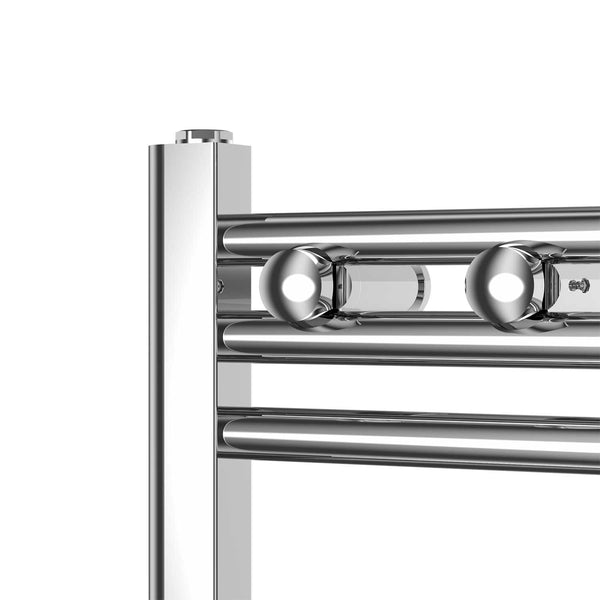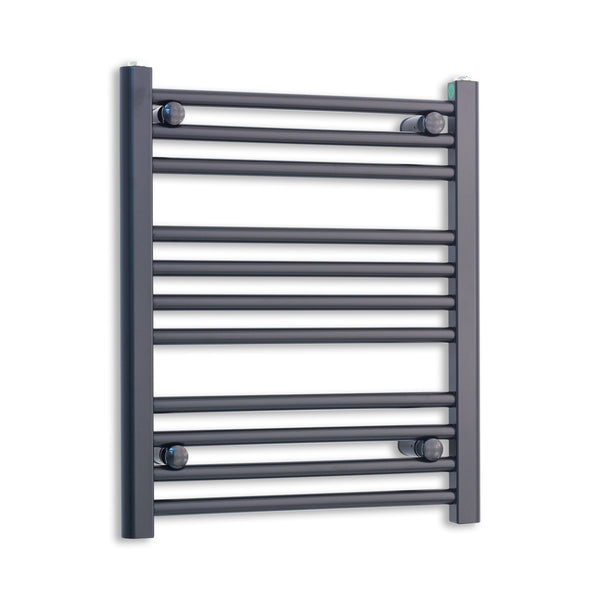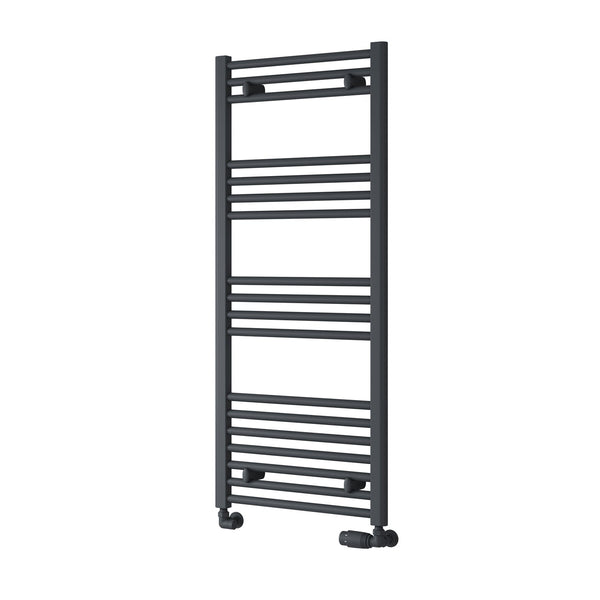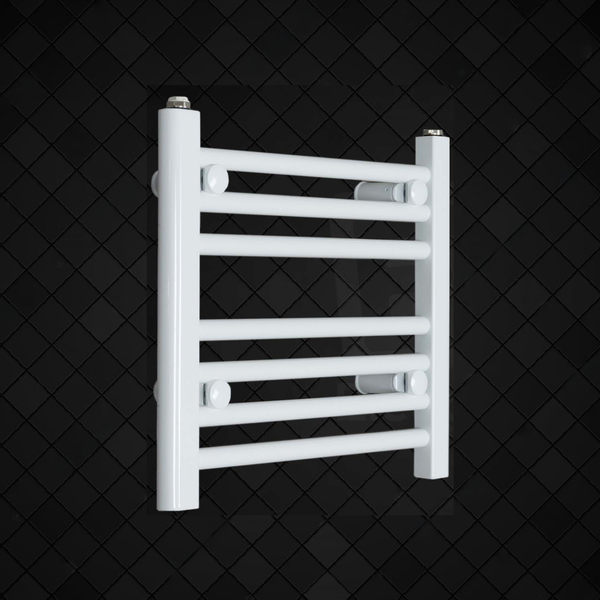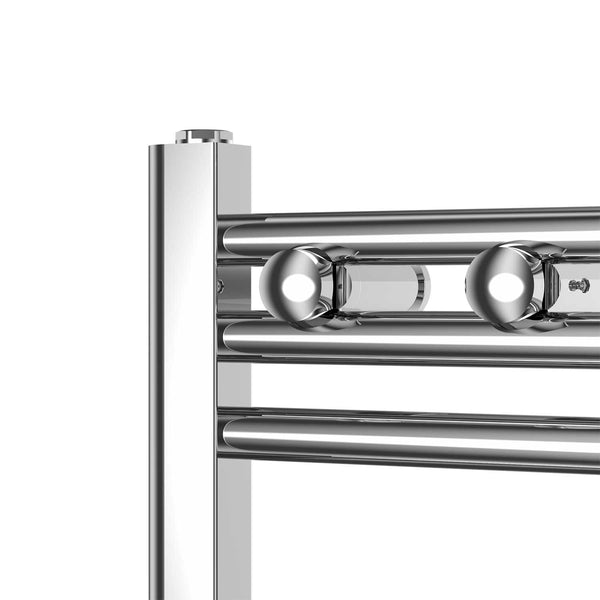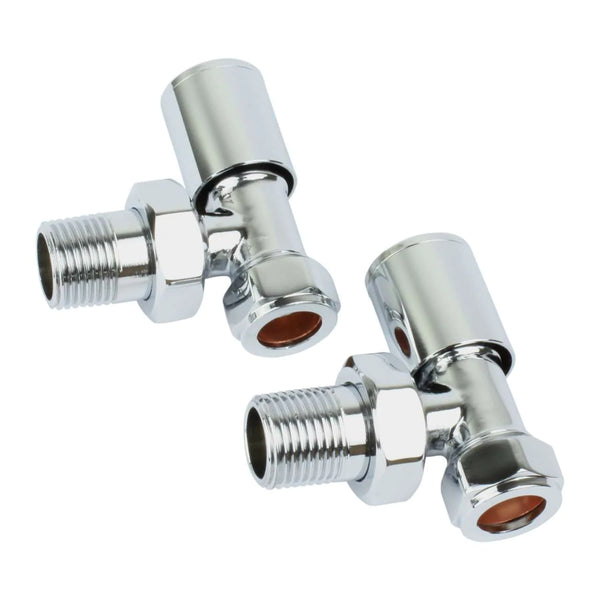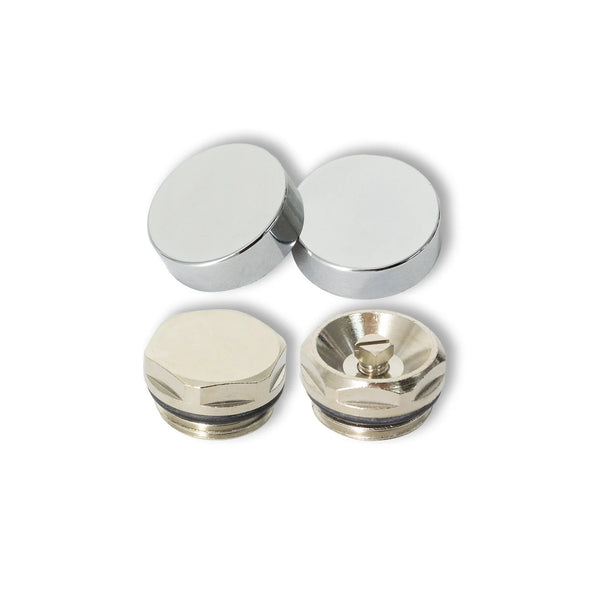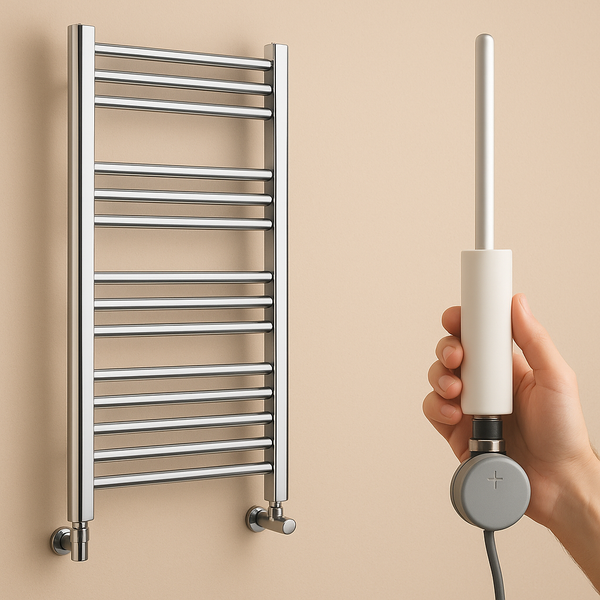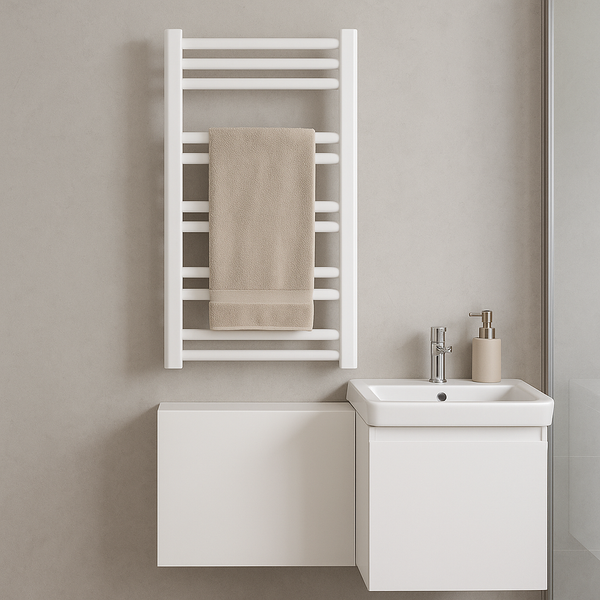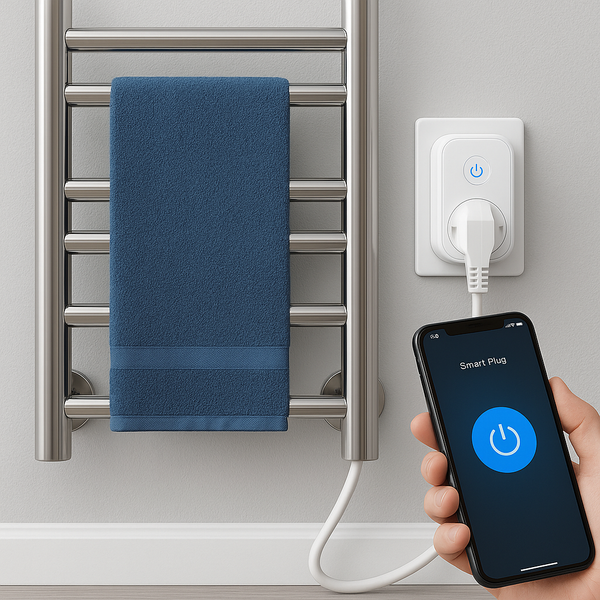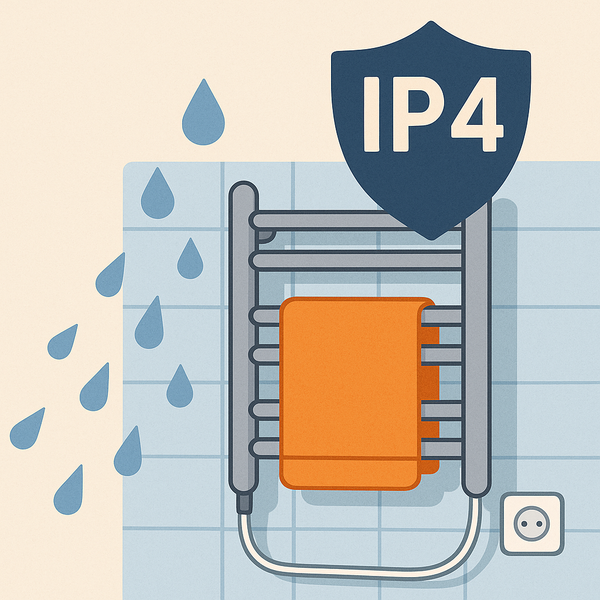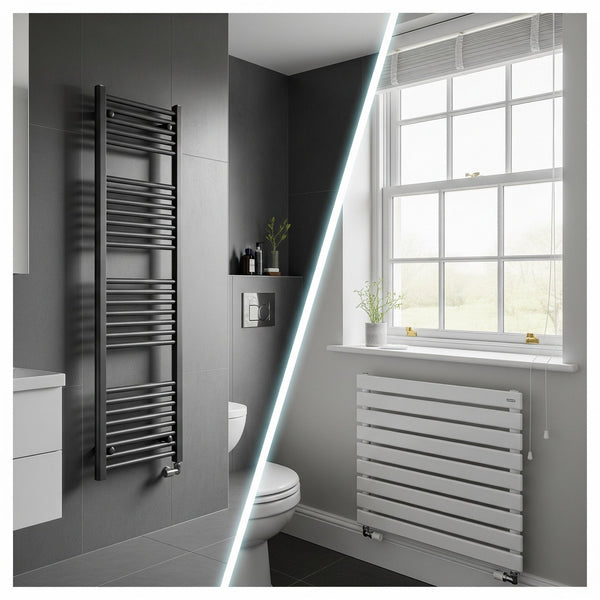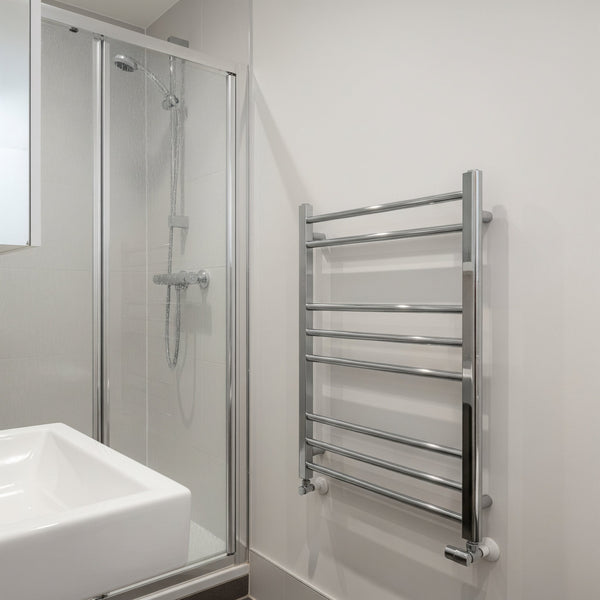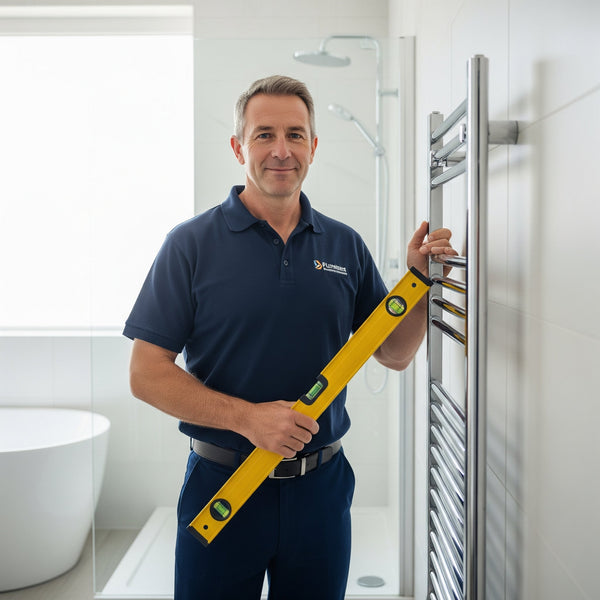Choosing the Right Valves: The Difference Between Thermostatic and Manual
When you're investing in a new heated towel rail or radiator, much of the focus goes on the style, size, and finish. But there's a smaller, equally important component that has a huge impact on your comfort, control, and energy bills: the valves. Choosing between a manual valve and a thermostatic radiator valve (TRV) isn't just a minor detail; it's fundamental to how your heating works for you.

It's one of the most common questions we get here at Companyblue. What’s the real difference, and which one should I choose? Understanding this choice is the key to creating a perfectly balanced and efficient heating system in your home. This guide will break down everything you need to know, making it easy to select the perfect valves to accompany your new radiator or towel rail.
Manual Valves: Simple & Straightforward Control
A manual valve is the most basic type of radiator valve. It functions exactly like a tap. You turn it on to allow hot water into your radiator, and you turn it off to stop the flow. The control is entirely in your hands.
How They Work
When you turn a manual valve, it opens a passage, allowing the hot water from your central heating system to flow into the radiator. The further you open it, the more hot water enters, and the hotter the radiator gets, regardless of the room's temperature. It will continue to emit heat until you manually turn it down or your entire central heating system switches off.
Pros:
- Simple to Use: Their on/off nature is intuitive and easy for anyone to understand.
- Lower Cost: Manual valves are generally less expensive to purchase than TRVs.
- Reliable: With fewer moving parts, they are robust and have a very long lifespan.
- Ideal for Bathrooms: They are the recommended choice for rooms where you want maximum heat output consistently, like a bathroom with a towel rail.
Cons:
- No Automatic Control: They don't react to changes in room temperature. If the sun comes out and heats the room, the radiator will stay on full blast unless you manually adjust it.
- Less Energy Efficient: Because they don't self-regulate, it's easy to waste energy by overheating rooms, leading to higher heating bills.
Thermostatic Radiator Valves (TRVs): Smart & Efficient Heating
A thermostatic radiator valve, or TRV, is a smart, self-regulating valve. It senses the temperature of the room and automatically adjusts the flow of hot water to the radiator to maintain a consistent, pre-set temperature.
How They Work
A TRV has a head containing a capsule of wax or liquid that expands when the room warms up and contracts as it cools.
- When the room reaches your desired temperature (set on the numbered dial, e.g., '3'), the substance inside the head expands.
- This expansion pushes a pin in the valve body, which closes the valve and restricts the flow of hot water into the radiator.
- As the room cools, the substance contracts, releasing the pin and allowing hot water to flow again until the desired temperature is re-established.
This clever mechanism means the radiator only uses the energy needed to keep the room at a comfortable level.
Pros:
- Energy Efficient: By preventing overheating, TRVs can significantly reduce your energy consumption. The Energy Saving Trust suggests they can save you substantial amounts on your annual heating bills.
- Room-by-Room Control: They allow you to set different temperatures in different rooms (e.g., warmer in the living room, cooler in a spare bedroom), a practice known as 'zonal heating'.
- Increased Comfort: They maintain a stable and comfortable temperature without you having to constantly adjust the heating.
- Frost Protection: Most TRVs have a frost protection setting (usually marked with a '*' symbol) which will open the valve slightly if the room temperature drops near freezing, preventing pipes from bursting.
Cons:
- Higher Initial Cost: TRVs are more expensive to buy than manual valves.
- Not for Every Room: They should not be used in the same room as your main wall thermostat.
The Golden Rule: Where NOT to Fit a TRV
You should NEVER install a TRV on the radiator in the same room as your main central heating wall thermostat (usually your hallway or living room). The two thermostats will fight for control. The TRV could shut the radiator off early, making the wall thermostat think the house is cold and keeping the boiler running unnecessarily, which wastes a huge amount of energy. Always leave a radiator in this space with a manual valve, or with the TRV fully open.
Similarly, it's generally recommended to fit manual valves on bathroom towel rails. You typically want the towel rail to get as hot as possible to dry towels effectively, regardless of how warm the room gets. A TRV might shut the towel rail off just when you need it most.
Click for all towel rail valve.
FAQ: Your Valve Questions Answered
Still unsure? Here are our answers to the most common questions about radiator valves.
Can I put a TRV on every radiator in my house?
No. You must leave at least one radiator without a TRV (or with the TRV fully open) to act as a bypass. This is usually the radiator in the room with the main wall thermostat (e.g., the hall). This ensures there is always a path for water to circulate when the boiler is on but other TRVs are closed, which prevents damage to the pump.
Why shouldn't I put a TRV on my bathroom towel rail?
The primary job of a heated towel rail is to dry towels. A TRV would sense the small, often steamy and warm bathroom's air temperature and could shut the towel rail off, leaving you with damp towels. A manual valve ensures you have maximum, consistent heat for drying whenever the heating is on.
Does turning a TRV to the maximum setting (e.g., '5') make the room heat up faster?
No, this is a common myth. The TRV's setting is a target temperature, not a speed control. Setting it to '5' simply tells the valve to stay open until the room reaches a higher temperature (e.g., 24°C). The room will heat up at the same speed as it would on a lower setting; the valve will just stay open for longer. For the fastest heat-up, ensure your main boiler thermostat is turned up.
Are TRVs difficult to install?
No more difficult than a manual valve. For a competent DIYer or a professional plumber, swapping a manual valve for a TRV is a straightforward job that involves draining the radiator, unscrewing the old valve, and fitting the new one. At Company Blue, we sell valve sets that include everything you need.
How do I know if my TRV is working correctly?
A common sign of a faulty TRV is a radiator that is always hot, even when the dial is turned down, or one that doesn't get hot at all. This is often caused by the internal pin getting stuck. You can often fix this by removing the thermostatic head and gently wiggling the exposed pin with a pair of grips until it moves freely again.
